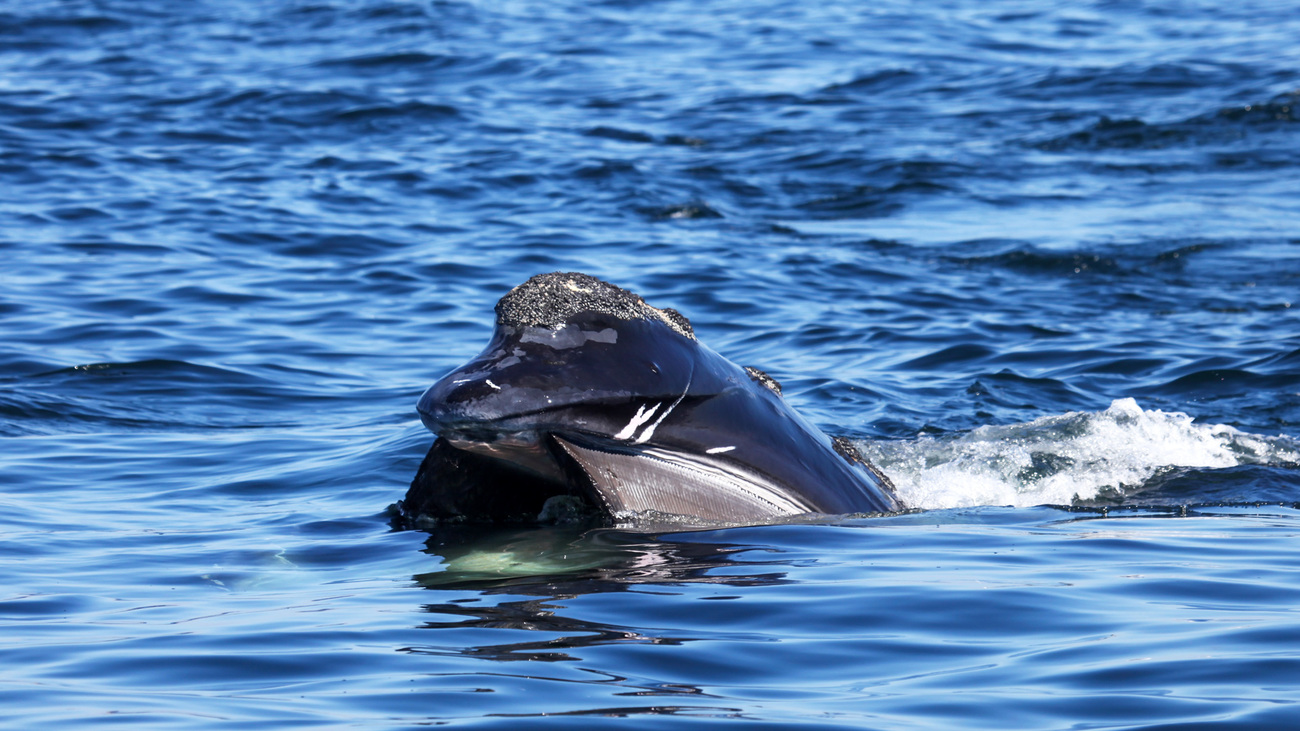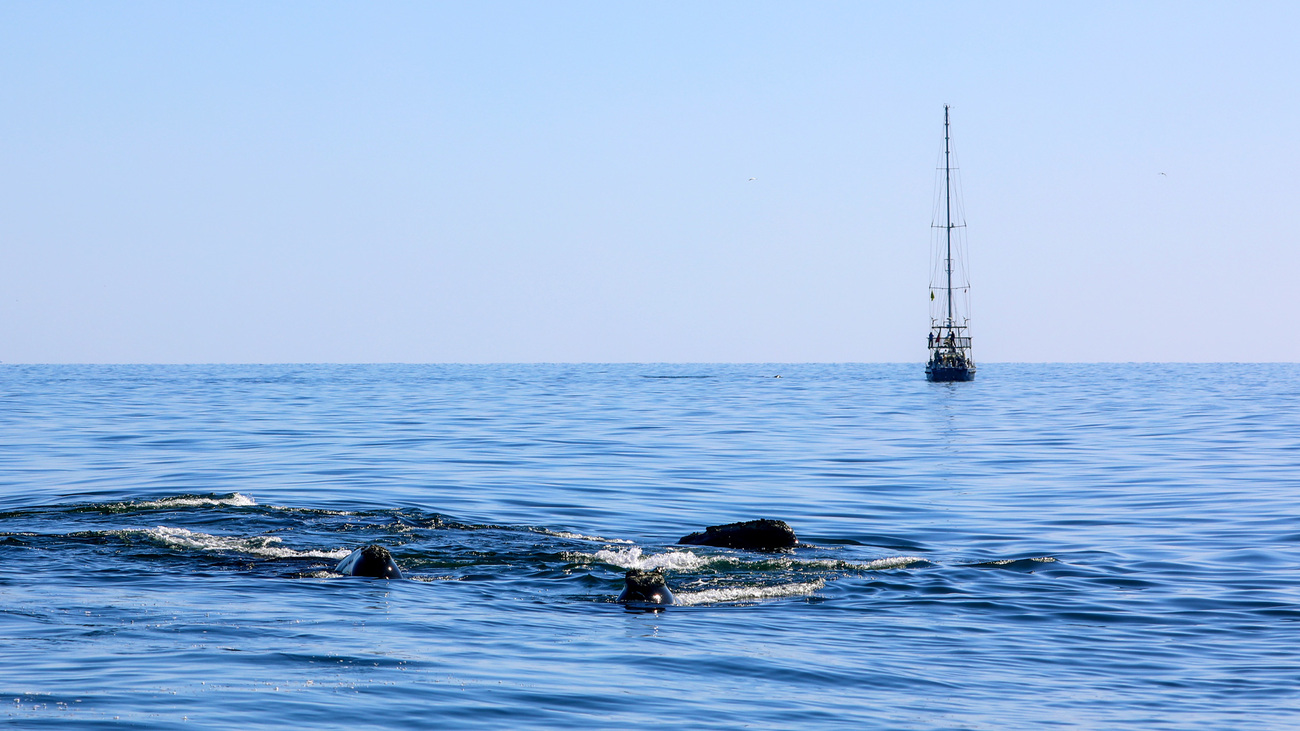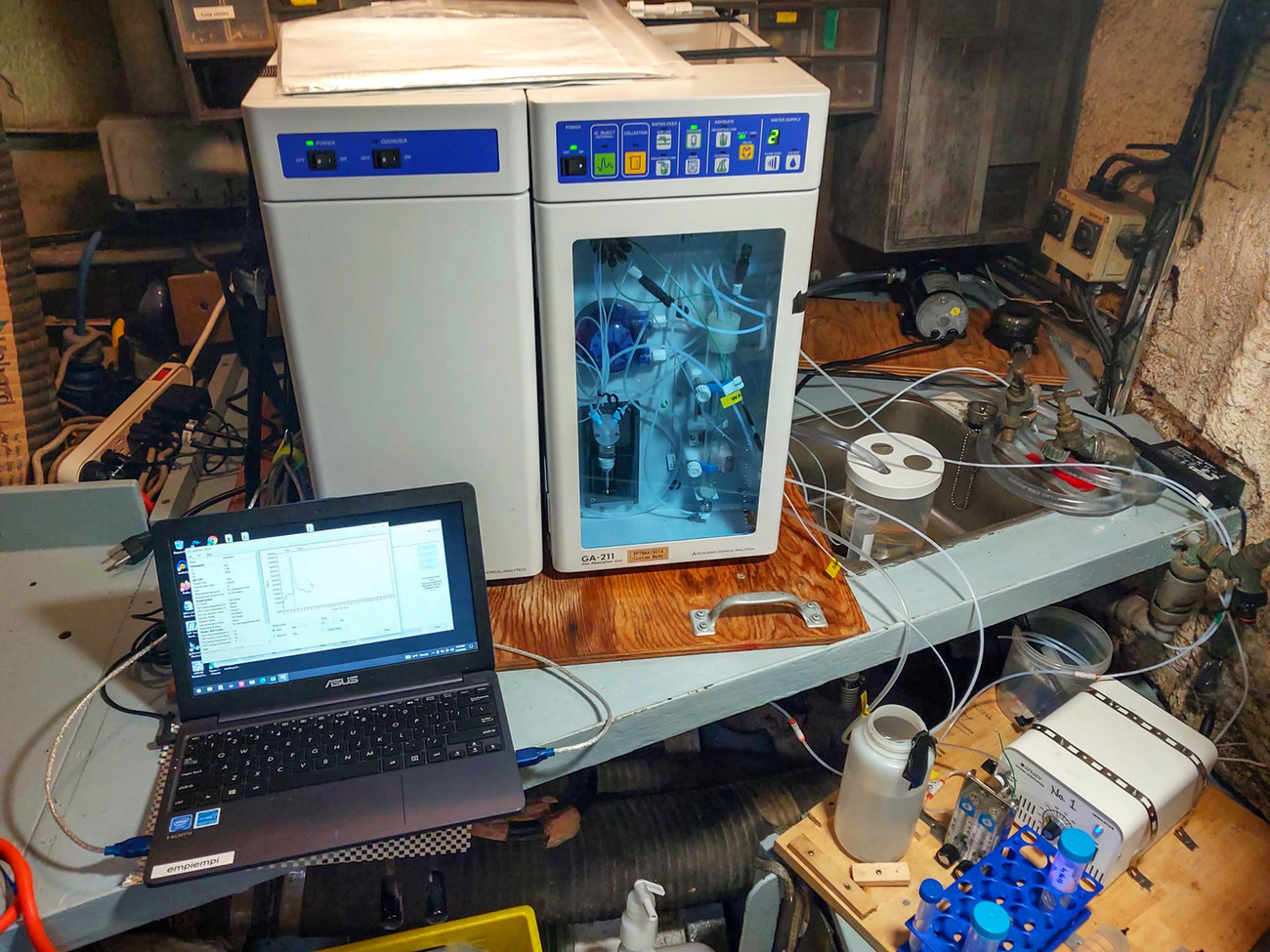Updates
Relief and recovery for animals and people in Myanmar
Read moreHow a chemical released by tiny marine animals can help protect North Atlantic right whales
Imagine sitting by the ocean, on the shore. A breeze gently passes you, carrying smells of salt and seaweed, and what you can only describe as the distinct scent of ‘the ocean’. But what exactly makes up this scent?
Contributing to this marine aroma is a gas called dimethyl sulfide (DMS). This chemical is known for its importance in ocean-air gas exchange and food webs, and it now has the potential to help researchers understand how elusive animals—like the critically endangered North Atlantic right whale—behave.

North Atlantic right whales, a type of baleen whale, are on the brink of extinction. There are approximately 350 individuals left and fewer than 70 breeding females. These numbers reflect an unstable population that is at risk of getting smaller as more calves and reproductive females are found injured or dead. The main causes of this unusual mortality event, which these whales have been experiencing since 2017, are entanglements in fishing gear and vessel strikes.
There have been several efforts to save injured and entangled whales at sea and prevent future impacts to the population. These include rescue missions to disentangle right whales from fishing gear and necropsies to determine their cause of death (which have remained consistent with IFAW research from 2019). Implementations of vessel speed restrictions also work to protect the species. Awareness continues to spread among citizens, mariners, and researchers with the use of Whale Alert to track whale sightings, allowing people on the water to react safely.
Through collaboration between researchers, scientists, policy makers, citizens, and fishermen, such protective measures are able to better conserve the North Atlantic right whale. While these safety measures are important and must continue, a new method of predicting the locations of right whales is urgently needed.

DMS is a chemical compound released when tiny marine crustaceans called zooplankton graze on microscopic plants known as phytoplankton. Phytoplankton produce compounds including dimethylsulfoniopropionate (DMSP) to survive in the seawater. The water soluble DMSP uses sulfur from the surrounding marine environment to support regulating the balance of saline water within and around the phytoplankton cells.
DMSP-aided regulation has been shown to protect these cells against changes in environmental conditions such as salinity, light, nutrients, and oxygen. This ultimately contributes to phytoplankton’s ability to survive in changing environments, giving them niche plasticity.
When phytoplankton get eaten by zooplankton, the DMSP they store releases into the water and is broken down into DMS by bacteria. The resulting chemical aroma lingers in the ocean and atmosphere, where it can act as a foraging signal attracting other predators, including North Atlantic right whales, searching for zooplankton to eat.
While predictive methods like species distribution and habitat suitability models have been used to map whale presence, predictive prey models using DMS are relatively new. Previous studies have demonstrated that DMS concentrations are spatially correlated to the biomass of zooplankton—a crucial food source for the North Atlantic right whale and other baleen whales. Given this correlation, a 2021 study demonstrated the potential to predict the presence of baleen whales based on these concentrations.
Over the last three years, Stellwagen Bank National Marine Sanctuary, Woods Hole Oceanographic Institution, and IFAW collaborated on research showing that North Atlantic right whales were showing up in areas with the highest DMS concentrations, and subsequently locating zooplankton. IFAW is working alongside these groups to continue researching DMS with the aim of identifying potential connections between DMS and North Atlantic right whale aggregations.
In 2023, researchers boarded the Song of the Whale, a non-invasive research vessel monitoring mother whales and their calves, to collect data on their behavior, health, habitat, and threats. Researchers followed their migratory path from their calving grounds in Florida to the Gulf of Maine, during which they investigated DMS-right whale rates of merging in Cape Cod.
One key question that has supported this study is: how can North Atlantic right whales use the aroma from DMS to pinpoint the microscopic zooplankton? It turns out they have a unique nasal structure drawing them directly to these small organisms.
IFAW and other groups are testing one hypothesis outlined in a 2024 study to support a claim that right whales may have an olfactory advantage when it comes to tracking and locating food. The study found that whales like North Atlantic right whales, with a preference for zooplankton, have nostrils (nares) with wider spacing than other whales. Just as stereo-vision can help animals locate prey at specific distances and owls’ asymmetrical ears can pinpoint certain sounds through stereo-hearing, these widely spaced nares allow for a greater ability to pinpoint prey using smell—also known as stereo-olfaction. These whales know exactly what food they want and are equipped with the tools to find it!

The purpose of this research is ultimately to understand the movements and locations of North Atlantic right whales to better predict future movements and protect them from threats of entanglement, vessel strikes, and noise pollution. With knowledge of where the whales are and where they might be going, an advanced notice could be given to fishermen to pull up their gear, preventing entanglement.
With climate change contributing to the northward shift in foraging grounds, North Atlantic right whale movement patterns are changing and interacting with human activity in different areas. This advanced notice will make it easier for different industries to plan ahead and protect the species.
Researchers ultimately hope to develop an easy-to-use system involving satellite tracking in order to remotely detect zooplankton and associated whales in near real time. By using colour-coded heat maps of DMS, there is a potential to gain greater predictive accuracy apart from visual sightings or acoustic recordings.
The fight to save the North Atlantic right whale is far from over. To learn more about what you can do to help save this critically endangered species, visit rightwhales.org.
Our work can’t get done without you. Please give what you can to help animals thrive.
Unfortunately, the browser you use is outdated and does not allow you to display the site correctly. Please install any of the modern browsers, for example:
Google Chrome Firefox Safari